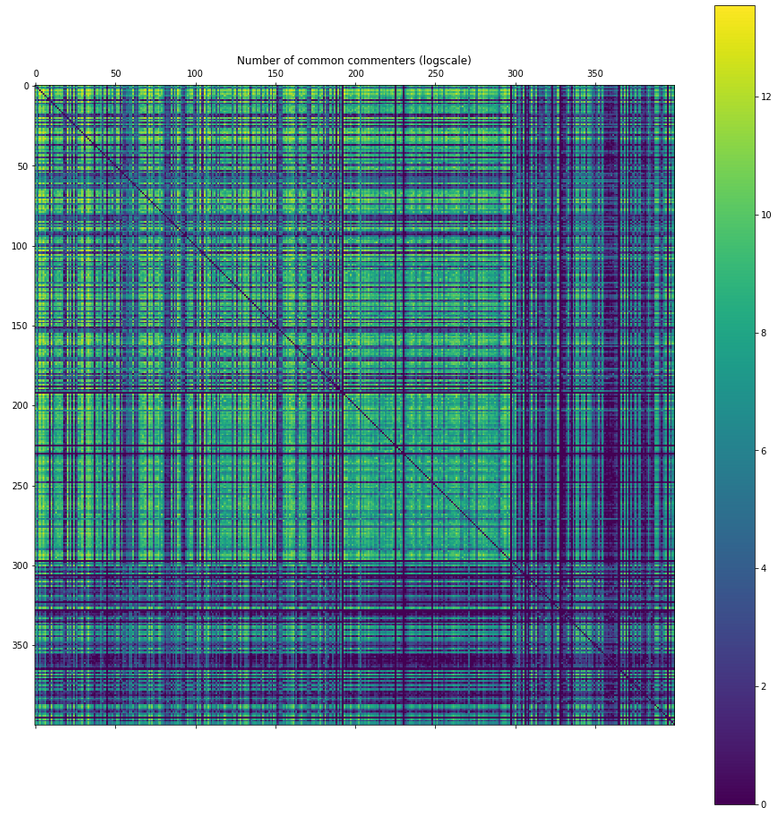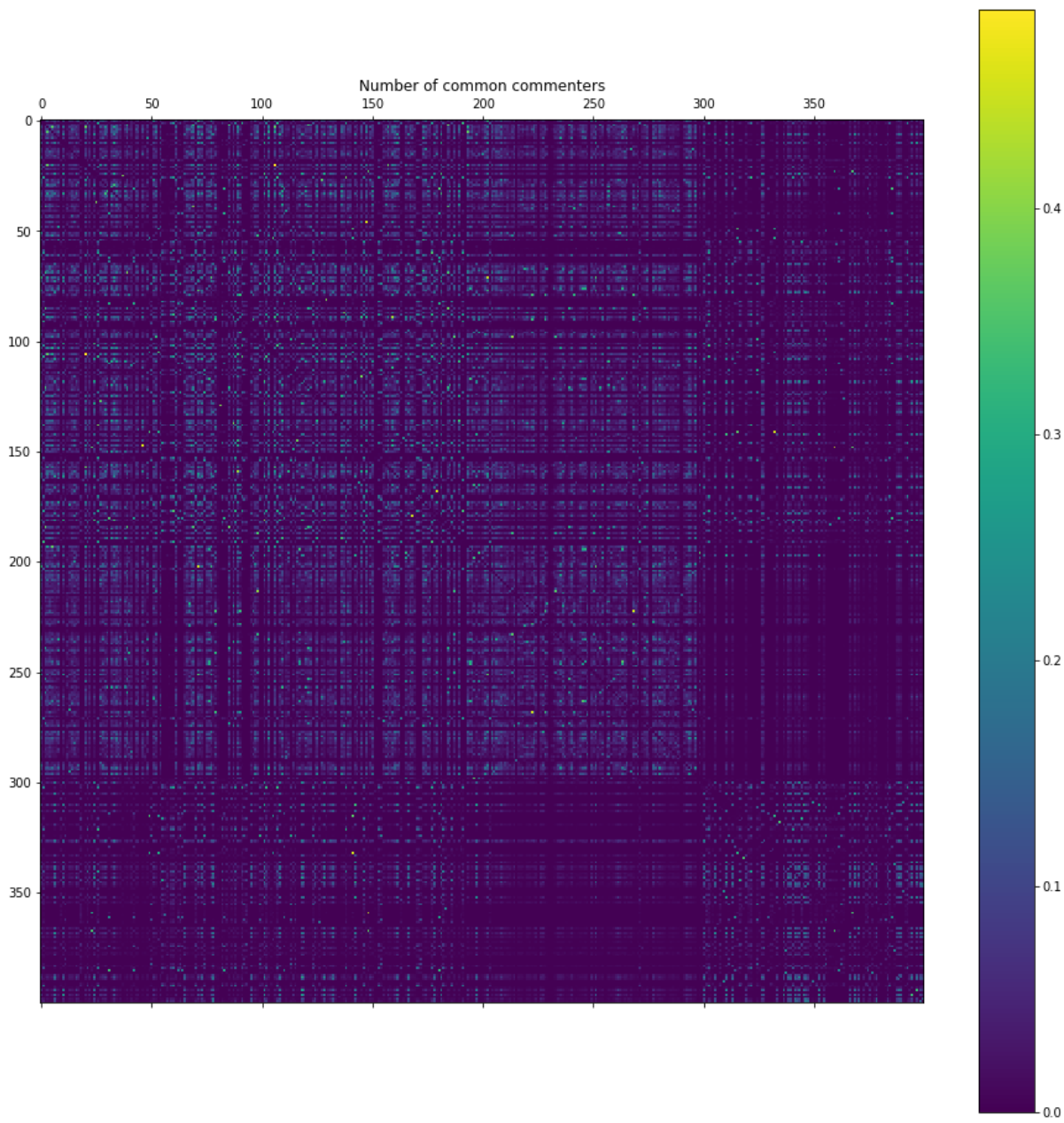 YouTube gaming content and political affiliation
YouTube gaming content and political affiliation
 YouTube gaming content and political affiliation
YouTube gaming content and political affiliation
Do gaming YouTubers have a political lean? To answer this question, we analysed the shared viewerbase between gaming and news/politics YouTube channels to see if there is a link between the two. By doing this, we can gain insight into the political leanings of gaming YouTubers and then see if specific games attract certain types of political opinions.
Because gaming creators are often watched by younger audiences, it is important to consider if they have any political leanings, as they can have a large influence on their viewers. If we were to find any link, this project would be important in order to inform viewers on potential bias in the content they are consuming.
As our dataset doesn't contain any information about viewers, we assume that the commenter-base of a video is statistically representative of its viewerbase. Furthermore, the comments dataset does not contain any information on the comment's text. So we also need to assume that all comments enjoyed or are in agreement with the video. We're aware these are questionables assumptions, as hate comments are a notoriously common experience for any Youtuber.
Because the dataset is very big, we only considered the comments from the top 200 most subscribed gaming channels as well as the top 200 news/politics channels.
Our first intuition was to take the aforementioned gaming and political channels and to find groups of YouTubers with similar commenters, regardless of the channel type. By doing this, if we found clusters containing both news/politics and gaming channels, we might have already found what we were looking for, as it would mean that some gaming YouTubers shared more viewers with some news or politics channels than to other gaming creators.
To do this, we looked at every commenter who left a comment on videos created by at least two of these channels. We then created a 400 by 400 matrix called the similarity matrix (depicted below). Each element of this matrix represents the number of commenters that left a comment on both channels. For example, the first row and column of the matrix represents PlayStation's shared commenters with every other channel. PewDiePie is represented by the fourth row and column, so if we look at the fourth element of the first row (or the first element of the first column), we will find how many people commented on both channels.

To get a more meaningful measure of similarity, we divided the number of common commenters by the average number of comments left on both channels. This normalization is important as it gives a proportion of shared commenters instead of just a number. This takes care of problems having to do with the biggest channel dominating our measures.
The normalized similarity matrix is thus given below:

As we can see, the matrix isn't dominated by particular channels. But rather there are specific connections between channels that pop out.
Surprisingly, we find that 5 of the channels do not share commenters with any of the other channels. We did not expect this, as these are some of the most popular channels on YouTube. We thought that any of them would have a common commenter with at least one of the others.
Let's look at theses disconnected channels :

Weird, these seem like popular channels, there should at least be some crossover in viewership with some of the other channels. Have we discovered a subscriber-bot scandal ?
After taking a look at these channels on YouTube, we came up to these simple explanations for 4 of these 5 channels :
Mastersaint, Jonni Valentayn and ABC News (Australia) have their comments turned off
SOMOY TV is a Bangladeshi television broadcast, so we assumed their viewers might not speak English and are not the most likely audience to watch and comment on other non-Bangladeshi videos
British Pathé is more difficult to explain. This channel publishes archives from 1910 to 1984. Their videos are in English and consistently get comments. Because the subject matter is quite niche, there might just not be any natural crossover in commenters as none of the other channels work with this type of content.
Using the above normalized similarity matrix, we ran a spectral clustering algorithm which gave us 2 groups of channels. We then made a force-based connection network to visualize our channels, using the similarity between two channels as the weight of their common edge. Finally, we colored the nodes based on the clusters computed by our algorithm.
As you can see below, the network makes two clear groups, which mostly correspond to the computed clusters.
At first, we thought it separated the channels into gaming and news / politics content, as most nodes in the left cluster are news channels, and most of the others are gaming.
However, there is a much better explanation for the way these groups formed.
If you look at the actual channels that are in the left cluster, all of them are news channels from India and Pakistan. Obviously, people will tend to watch news that is the most relevant to them.
We thought this type of problem wouldn't arise as our dataset should only contain English speaking YouTubers. Unfortunately for us, a lot of popular news channels are either bilingual, or are just misclassified.
What tripped us at first was that the clusters look a lot like the gaming and news/politics divide. This is actually just because there are a lot more gaming channels than news channels, and they are for the most part English speaking. For the news channels, there tends to be only a few per country and their number tends to grow with the size of the population. This means that the top 200 most subscribed news/politics channels is dominated by countries with a lot of people, such as India and Pakistan.
Because we still wanted to find out if gaming YouTubers have a political lean, and that most of the top 200 speak English, we needed to filter these non-English channels out. We did not find any good way of doing this before the clustering, as some videos have English titles and descriptions, but speak in another language. Therefore, we decided to use our clusters to filter them out, and restart the process with only the right cluster. We also made sure to filter out the disconnected channels.
Once these channels were filtered out, we recomputed a new normalised similarity matrix and separated the channels into two clusters. Again, we found one big cluster of English-speaking channels and one cluster with just 3 Kenyan news channels.

At this point, we were quite annoyed, as we thought we might have to go through every country, but as long as we continued recursively clustering and filtering out non-English channels, we would eventually find what we were looking for.
Luckily, we didn't have to. We were left with 2 clusters, here are their statistics :

As we can see, one cluster is clearly has more news/politics channels, and the other corresponds to gaming YouTubers. This means that overall, people that comment on news/politics videos tend not to comment as much on gaming videos and vice versa.
If there isn't any inherent crossover in commenters, we can still try and find some type of political bias for gaming YouTubers by first classifying the news/politics channels on a political axis, and then look at their commenters to see what gaming channels they like to watch.
To do this, we took the filtered channels computed previously and only kept the news/political channels. We now have channels that are English-speaking, and only talk about news and/or politics.
Then, we applied the same clustering method by looking at their common commenters, making a similarity matrix and running a spectral clustering algorithm. To allow for some nuance, we decided to cluster into 4 groups.
Here is the resulting network :
The first two clusters are not very useful. One of them only has one channel, which is John Legends (a mislabelled music channel). The other group contains 2 channels, but they are both owned by GMA (Good Morning America), so their similarity is obviously going to be high.
For the two others, although they contain quite a lot of channels, we cannot think of any kind of reason as to what they represent. For example, looking at American politics, notoriously republican channels such as Ben Shapiro and Fox News are in the same cluster as CNN or MSNBC, who are usually more pro-democrats. We thought it might still separate based on geography, but in both clusters, a variety of different regions are represented.
This would mean that people don't tend to comment on videos that always have the same political opinions. This also means that we cannot prove anything about the political lean of gaming YouTubers.
We therefore conclude that, under our questionable assumptions, there is no significant crossover in viewership between gaming YouTubers and news/politics channels. This is probably due to a difference in age demographics, as children and adolescents probably don't care as much about news and politics compared to their favorite video game.
Furthermore, we weren't able to classify commenters into any kind of political affiliation.
Having access to the viewership data would probably have revealed a lot more about the situation, but based on our analysis, gaming communities are not tied to any kind of political bias.
This data story was for the Fall 2022 edition of the Applied Data Analysis class at EPFL.